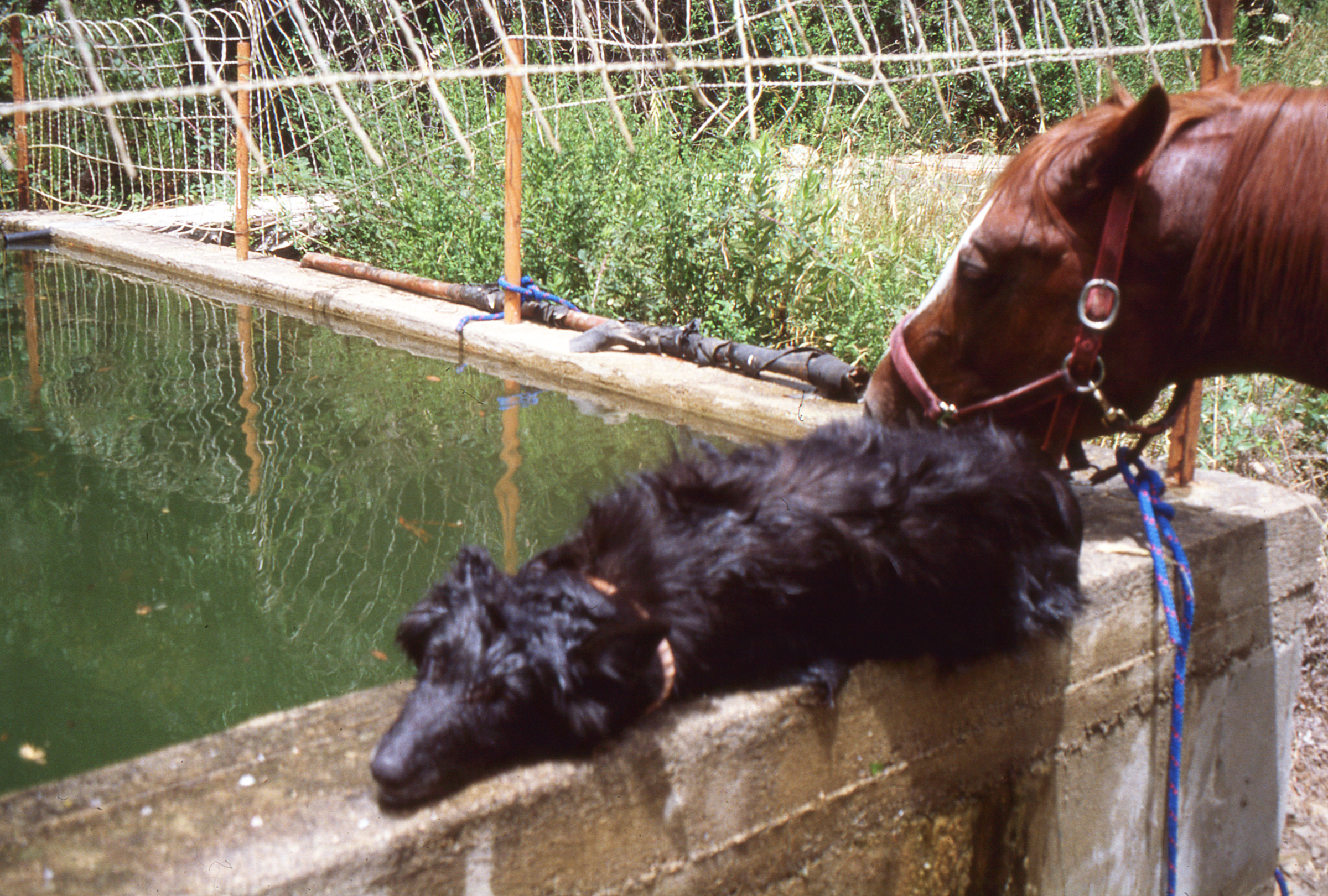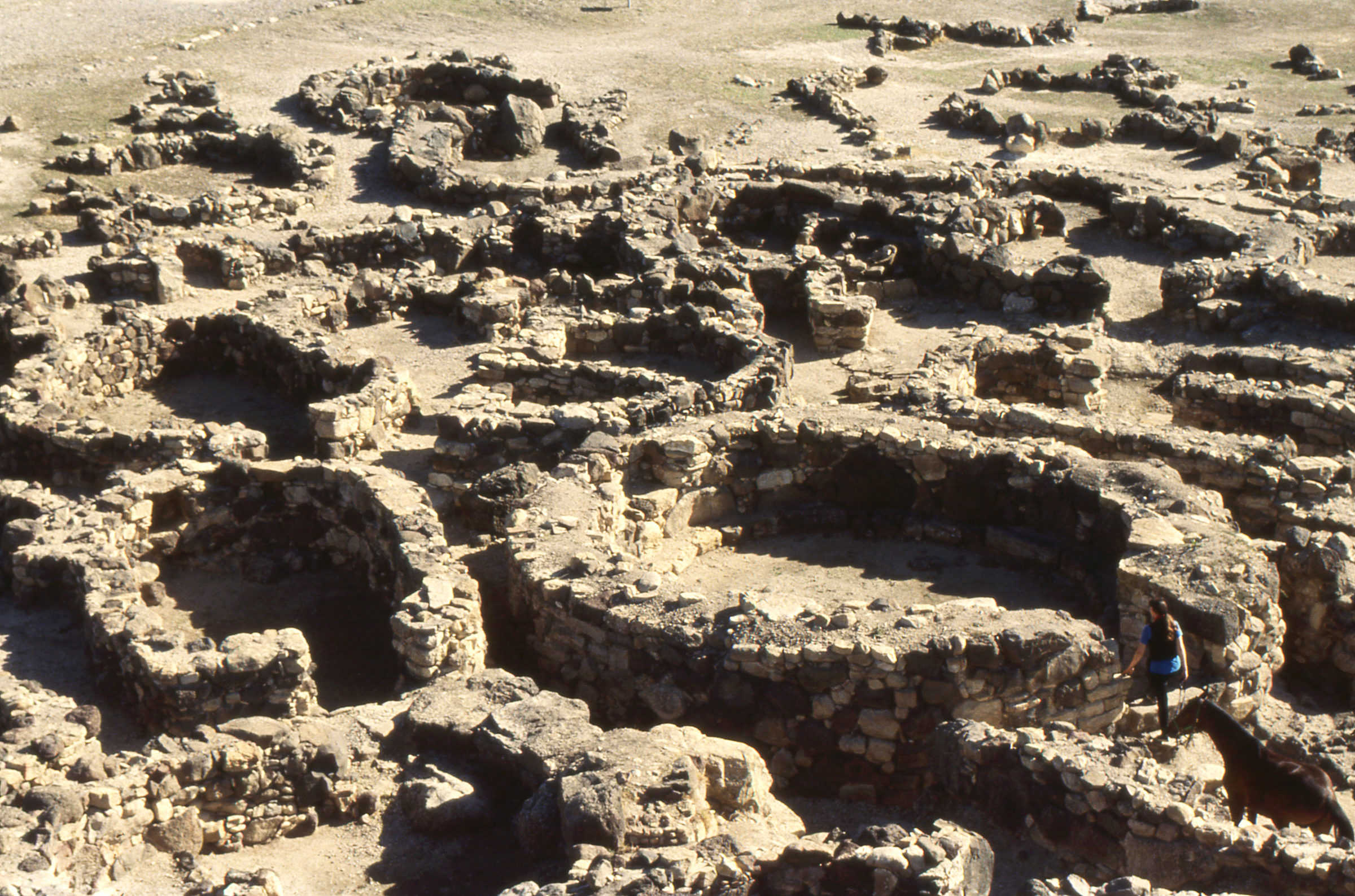Islet of Sant’Antioco, 26 June, departure and guided for a day by fellow horse riders to get me on the right track
When I concluded my unforgettable solo horse trek ‘Italy by horse” in October 1984, which was documented in a 25-page photo reportage in Airone, Italy’s high-ranking nature magazine in 1986, I started making enthusiastic plans for yet another long solo horse trek, this time Australia. But there was a calling within me to fill that gap, the urge for another horse ride in Italy. What about Sardinia – one of the most ancient lands in Europe?
At the end of ’86 Sardinian horse riding friends invited me to visit them in Cagliari, Sardinia’s capital. At that time the National Equestrian Tourism Association (ANTE) accepted my proposal to blaze an equestrian trail across the island from south to north. It was for me an invitation to plan and organize that ride.
On the 26th of June 1988 I saddled up again for what I intuitively knew to be my last ride in Italy, or in Europe, for that matter.
A sparsely populated country before us
An exhausted Micla comforted by Villacidro
Islet of Sant’ Antioco, 26th June.
An excited group of riders and horses had gathered to accompany us for the first stage of our equestrian journey. “Us” being a beautiful 5 year old copper-colored stallion of Anglo-Sardo breed named Villacidro; a jet-black Belgian sheep dog Micla and myself. We faced 500 kilometers of solitary ride through the heart of Sardinia on the quest to explore its ancient equestrian folklore with its colorful festivities, to learn more about the islands history, hear my horse’s hoofs echo along old trails forged by Phoenicians, Carthaginians, Romans, Byzantines, Aragonese and Spanish.
These trails led us along well-trodden mule paths often bordered by well-preserved but slowly crumbling stone walls to the historic village of Ittireddu. This small town is of considerable importance because of its archeological museum and many ancient megalithic edifices (nuraghe), Sardinia’s most characteristic monuments. Holy wells and other interesting monuments dating back to Roman and medieval periods laced our path. Ittireddu was built around the 6th-7thcentury around the pretty Christian-Byzantine church of Santo Croce. The town has gradually developed over the centuries, passing from about 80 inhabitants in 1519 to about 700 in 1988 to around 1000 in 2018.
High Plain of Marmilla
The medieval and picturesque Castle of Marmilla, built in the XII century
Su Nuraxi di Barumini, the Nuragic archeological site in Barumini
The Maddalenas, islet of Caprera, known as the residence of the Italian revolutionary Giuseppe Garibaldi was our destination. Garibaldi was an Italian General who, as a key military figure, contributed to the Italian unification and the creation of the Kingdom of Italy. He was considered an unflagging foe of tyranny and devoted his life to fighting oppression and was by many regarded as a folk hero. Born in Nice, France in 1807, he died on Caprera in 1882.
Cavallino della Giara on the basaltic high plains of the Giara di Gesturi
A small mob of ponies freshly rounded up and ready to be broken in
Cavalli della Giara
By the end of the journey in mid-August our trio had traversed fertile agricultural plains, basaltic high plains, crossed mountain chains and cantered through the waters of artificial lakes and had been windblown along wild coastlines where granite rocks were carved by the wind characterized the environment, enchanted by villagers in historic towns showing off their handcrafted tapestries, carpets and blankets as well as culinary delights.
The Sardinian stock saddle, with seat made of wood
After 200 kilometers we climbed up to a small tableland, as typical for this area, the Grighine. Once at the top small villages appear from behind the hills. We had arrived in the small village of Samugheo, an important centre of blooming handicraft textile activities, carved wooden furniture production and weaving workshops.
But foremost the horse trek was about horses. Sardinia is considered “the land of horses”, with its small indomitable horses of the Giarra and the Anglo-Sardo horse that gives so much satisfaction to the Sardinian breeding and thanks to knowledgeable and enthusiastic local horsemen, I was introduced to some of the island’s rich equestrian folklore of colourful street parades, festivals and races, all of which are entrenched in the history of this island.
A stockman showing off his Sardinian saddle
The small village of Burgos with its fortified, medieval Castle Burgos which is situated at the top of a granite cliff.
While festivities, or carnivals, of Sardinian folklore are held all over the island the most well-known is the Sartiglia which is annually held in Oristano, situated on the island’s lower west coast. This tournament originated during the Spanish occupation dating as far back as circa 1400. Since that time the ritual has been arranged in detail and remained unaltered throughout the centuries: the choreography, the costumes, the succession of shows and race horses, the place where they are held - everything has remained unchanged.
Wearing traditional costumes and masks the riders try to run their swords through a hanging silver star.
The island’s most famous and genuine celebration of faith and bold horsemanship is said to be the “S’Ardia” at Sedilo, annually held on the 6th-7th of July at the Sanctuary of San Constantino. This is a typical country sanctuary. The “S’Ardia” is closely linked to the cult of Greek-Byzantine derivation and addressed to Emporer Constantine who, in Sardinia, as in the Orthodox Menologin, which is considered a Saint by the faithful.
A woman dressed in a traditional costume out shopping in the picturesque mountain village of Desulo.
Samugheo – women demonstrate the weaving process
The Sartiglia - annually held over Easter at Oristano
On the 7th of August it was in Fonni, at 1000m altitude the highest town in Sardinia, that my horse Villacidro and I were given the honor of leading the contingent of 20 horses and riders dressed in colorful costumes through the city to the start of the palio, the local horse race.
One of the many humorous encounters on my horse ride from south to north
Ittireddu and its small Christian-Byzantine church of Santa Croce.




















